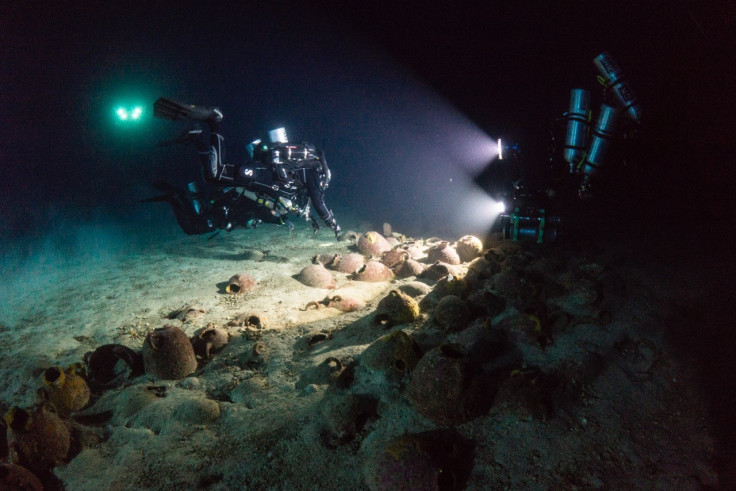Oldest shipwreck in Central Mediterranean reveals clues about Phoenician trade networks
A shipwreck found a decade ago is still yielding new clues regarding the Phoenician civilisation.
Divers have plunged 110 metres deep in the Mediterranean Sea to recover artefacts from a 2,700 year old shipwreck. One of their discoveries, an amphora from Malta, suggests the Maltese islands were an integral part of the Phoenician trade route in the Mediterranean.
The shipwreck was first found in 2007 off the coasts of Gozo, an island in the Maltese archipelago. It dates back to the first part of the 7th century BC, which makes it is oldest wreck ever found in the central Mediterranean to date. Between 2007 and 2009, archaeologists surveyed the site but limited equipment meant they weren't able to recover any objects.
In 2014, the team led by Dr Timmy Gambin from the University of Malta, along with colleagues from the University of Aix-Marseille, France, received funding from the French National Research Agency. This allowed them to record the site using very high-resolution imagery and to unearth four artefacts – two amphorae, an urn and a grinding stone. However, the expedition was cut short by bad weather so they were not able to map the site as it was when they left it, and to recover all the objects they wanted.

Although the expedition made the headlines, there was only enough funding for the 2014 season. The next two years were thus spent coming up with a low-cost method to return to the site and obtain similar results.
"Our research in 2014 was a massive success but it took us time to find a solution to go back and to test that it worked. We decided to explore the site with divers using diver-held high resolution cameras with very powerful lights to capture video footage from the wreck. From the still images, we would then be able to come up with a 3D mapping of the site," Gambin told IBTimes UK. This was a bold move: it is indeed the first time archaeologists have dived so deep underwater without using a submarine to complete archaeological excavations.
Missing piece of the puzzle
In September 2016, an international team with divers from Malta, France, Italy and Finland went back to the site for five days. This time, they retrieved more objects from the shipwreck, including the jug which they believe originated from Malta. This confirms that Malta was integrated in the Phoenician trade network at the time and that the ship had not just happened to sink close to Malta during its voyage.
"Finding a jug from the Maltese Islands is not in itself a huge discovery, but it is a new piece to the puzzle that helps us retrace the ship's route. The presence of Maltese pottery aboard the ship indicates it had called into one of Malta's ports and that it is only after leaving one of these ports that it was caught in a storm and sank.This tells us Maltese islands were on the Phoenician trade route and formed part of their maritime network," Gambin says.

Most shipwrecks found in the Mediterranean are Roman and date back to between the 2nd century BC and the 2nd century AD, a time when shipping increased exponentially. They usually carry one type of cargo – amphorae containing only olive oil or only wine for instance. This older shipwreck is significant because of the great diversity of the ship's cargo.
"The ship contained a fantastic mix of objects – there was at least six types of different ceramic objects on board from different areas around the Mediterranean. We know from literary sources and archaeological evidence found in different countries that the Phoenicians travelled everywhere, but this gives us a snapshot of their extensive trade links all around the Mediterranean," Gambin concludes.
The next step for the team will be to analyse the remains of the potteries' contents, to investigate what types of merchandise were carried inside the objects.
© Copyright IBTimes 2025. All rights reserved.






















